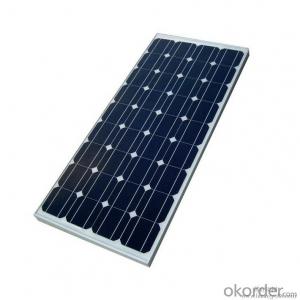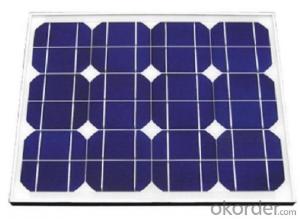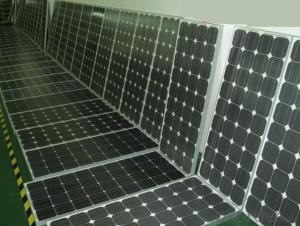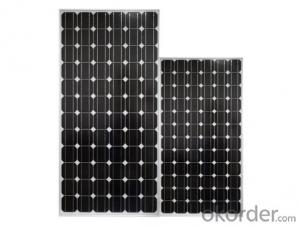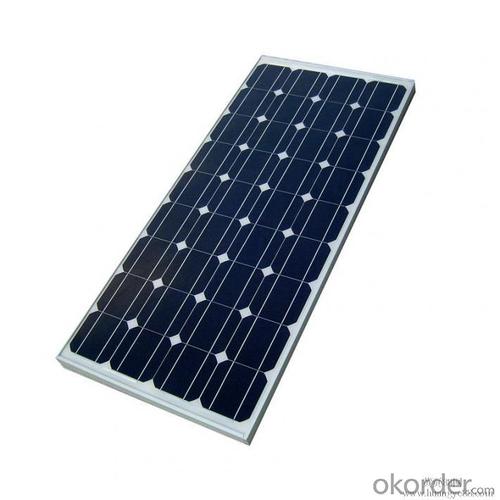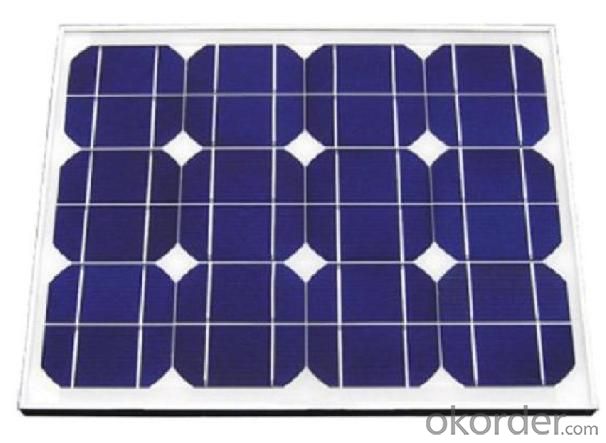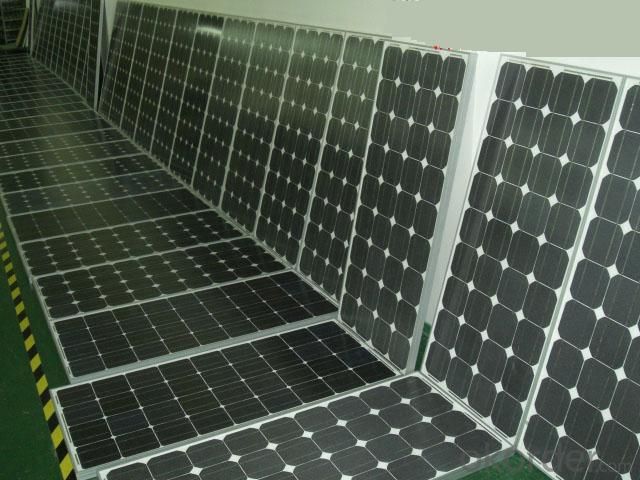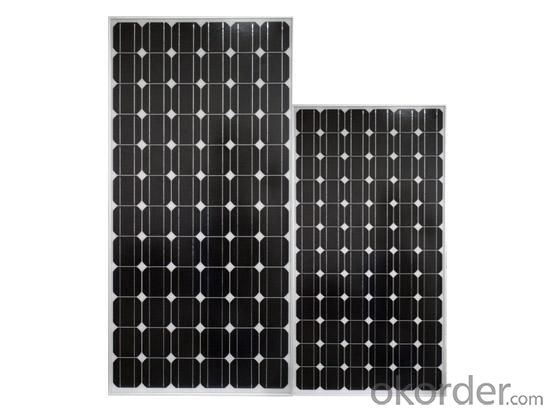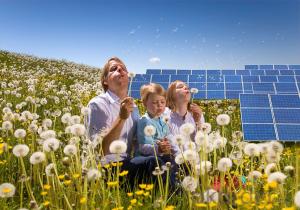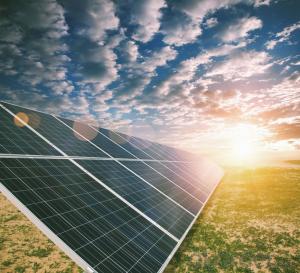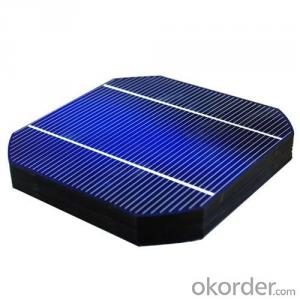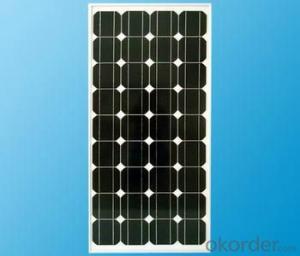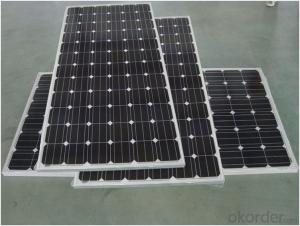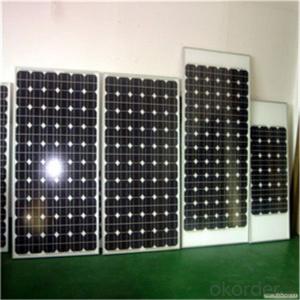Critter Guard 55w18v Mono Solar Panel, High Quality, Hot Sales
- Loading Port:
- China main port
- Payment Terms:
- TT OR LC
- Min Order Qty:
- 500 watt
- Supply Capability:
- 100000 watt/month
OKorder Service Pledge
OKorder Financial Service
You Might Also Like
Structure
20W18V Mono Solar Panel,High Quality,Hot Sales
We are focus on 1w -100W solar modules with high quality and best price.
Mechanical Characteristics
Frame (Material, Comers, etc.) | Anodized Aluminium | ||
Front side | Glass | ||
Front glass thickness | 3.2mm | ||
Encapsulate | EVA | ||
Back side | TPT | ||
Junction box | IP65 | ||
MOQ: No.
Dlivery time: 5 days after deposit for small number, for large number, we will check and give exact reply Payment: 100% TT for small quantity; legal way is 30% deposit + 70% balance before shipment
Model:PS-20M-18V
size: 480*357*25mm or as required
Feature
Pure Sine Wave Output;
High performance Maximum Power Point Tracking(MPPT);
Power Automatically Locked(APL);
Reverse power transmission;
High-Frequency High Conversion Rate;
Anti-Islanding Protect;
Input /output is fully isolated to protect the electrical safety;
Multiple parallel stacking;
The Leading Patent Technology;
IP65 WaterProof;
Flexible Installation;
Simplify maintenance (user serviceable)
High Efficiency & Best Cost-Effectiveness
Image
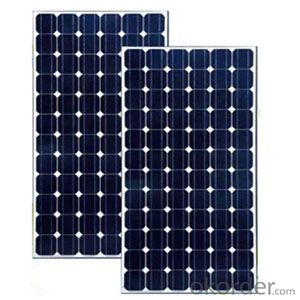
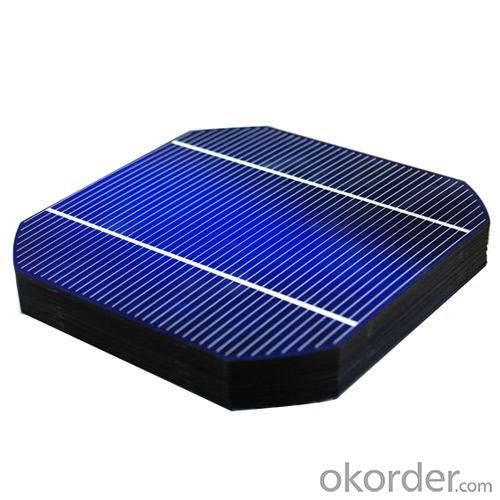
Specification
Model | PS-20M -18V |
Crystalline type | monocrystalline |
Maximum power (Wp) | 20 |
Maximum power voltage (V) | 17.2 |
Maximum power current (A) | 1.18 |
Open circuit voltage (V) | 21.4 |
Short circuit current (A) | 1.30 |
Number of cells (Pcs) | 36 |
Size of module (mm) | 475*350*25mm or as required |
Maximum system voltage (V) | 715 |
Temperature Range | -40~+85 C |
Surface Maximum Load Capacity | 60m/s(200kg/sq.m) |
Allowable Hail Load | steel ball fall down from 1m height |
Weight per piece (kg) | 1.8 |
Length of Cables (mm) | 300 |
Cell Efficiency (%) | >17.6% |
Module Efficiency (%) | >12% |
Output tolerance (%) | +/-5% |
Frame (Material, Corners, etc.) | Aluminum |
Standard Test Conditions | AM1.5 1000W/m2 25 |
FF (%) | 72% |
Warranty | 2 years product warranty and 25 years 80% of power |
FAQ
Can we visit your factory?
Surely, I will arrange the trip basing on your business schedule.
Can you do OEM for us?
Yes, we can.
How do you pack your products?
We have rich experience on how to pack the panels to make sure the safety on shipment when it arrives at the destination.
Can you help us install the module if we cooperate with you?
We haven’t entered into installation sector, but we have the plan in near future.
- Q: How do solar panels reduce carbon emissions?
- Solar panels reduce carbon emissions by harnessing the power of the sun to generate electricity. Unlike traditional energy sources such as coal or natural gas, solar energy does not produce any greenhouse gases when converted into electricity. By utilizing solar panels to generate power, we can reduce our reliance on fossil fuels and significantly decrease carbon emissions, contributing to the fight against climate change.
- Q: Lower solar panel/wind turbine prices allow wider applications, hence a great help to a greener mother earth!
- “the living feed the dead” -- may have actually lucked into the answer. The government does assist the petroleum industry and it funded the research that gave us nuclear power. If alternative energy is going to work, it may require intervention by the government in terms of access to land (imminent domain) and to the transmission grid. Alternative energy companies are stuck because of their own paranoia (of industrial espionage) and because they are being gouged by land owners. A single wind turbine on your land can net you $70,000 a year (plus a 0% increase per year for inflation), forever. Then there is the cost of the corridor to access the grid. Solar companies are trying to purchase land like drunken sailors – and landowners in areas where solar can be most effective (e.g., the American Southwest) are hip to what is going own. So when acquisition agents call to purchase land, owners are demanding outrageous prices (say $5,000/acre for land that is worth about $00/acre, otherwise). Then there is the fact that nobody (rich or poor) wants one in their backyard, not to mention the various PAVE (People Against Virtually Everything) groups who protest stuff just because they can. ===== A Modest Proposal -- <<0% inflation rate is an extremely high You are, of course, right. Nevertheless, that is what some Wind Energy companies are offering land owners as part of the lease agreement for placing turbines on their land. I agree it's outrageous, but I'm an environmental consultant for several Wind companies and I know what they are offering. As a side note. They were initally so lame (and this is related to their general paranoia) that they cut deals to place the turbines before they secured corridor access to substations. When they subsequently approached the land owners (the same ones with the turbines on their land) about the corridor, they were held hostage for outrageous money - as in millions of dollars - because by then the land owners had them over a barrel.
- Q: I contend:As far as the solar panels causing global warming I'll try to explain. If you put a black panel on the ground or on your house and don't connect it to anything, it will absorb solar energy (heat) during daylight and release it at night (radiation). The net heat gain is zero. If you hook up a solar panel in the same place but hook it up to batteries, charge the batteries during sunlight hours and using that energy to electrically heat the home at night. The panels will absorb solar energy during the day but will convert that to electrical energy in the batteries instead of radiating it back into space at night. The result is a net gain in earth's temperature.Right or wrong?
- One piece of technology: Hydro-energy storage. Pump water up to an artificial lake at the top of a mountain to store energy, and then let the water run down through turbines to retrieve the energy later, eliminating most or all of the need for batteries. Usually this stuff saying renewables suck is BS when you actually try. Yet another method, are solar power towers which last longer than solar panels and continue to generate energy at night. While a non-universal storage method, it's good for storing the sun's energy in the mechanism that generates the power. According to some studies, they are the best option next to wind turbines. I'll describe a particular model. A field of mirrors beams light to a part of the tower which contains salt, for it's incredible heat storage capacity when molten. In turn, the heat from that region heats water which spins some turbines, generating lots of energy. Currently, the best models continue to generate electricity at night and for a few consecutive cloudy days. I think whoever was saying that was probably trying to delay response. There are too many ways around that to be true, and saying that it contributes more to Global Warming than fossil fuels is a lie. This is why some government intervention is needed: The companies aren't responding to new ideas, and they happen to often be fossil fuel companies as well. If you don't create the environment where it lowers fossil fuel consumption, then they win because prices stay high.
- Q: Are there any safety concerns with solar panels?
- Yes, there are some safety concerns associated with solar panels. These include the risk of electrical shock during installation or maintenance, the potential for fire hazards due to faulty wiring or overheating, and the handling of toxic materials during the manufacturing and disposal processes. However, these concerns can be mitigated through proper installation, adherence to safety regulations, and use of high-quality components.
- Q: I have an electric bicycle that I travel to work by, pulling a modified child carrying trailer that holds two 2 volt deep cycle batteries in series to power the 24 volt bike motor. I'm thinking about adding a 50 watt solar panel (or larger depending on the room I can make available) to charge while I'm at work and to provide some extra juice while on my more distant travels.Can I get a solar panel to charge them while they're connected the way they are: in series? Does charging work that way?I've read that in order to charge the 24 volt battery setup (if the answer to the Q above is yes), the output from my solar panel would need to be a little more than 24 volts. Is this true? If so, how many volts?Since the bike is supposed to be powered at 24 volts and I have an x-volt (x gt; 24v) solar panel connected to it, will this cause any damage to the controller or other components while running them?Will it help supply power even while the motor is being run?Thanks.
- A solar panel to charge a 2V battery has 36 cells in series. This allows for temperature of the panel up to 60°C, and the maximum required charge voltage. For a 24V battery, 2 panels in series. A 24V battery requires around 28-29V, but look up your battery data sheet to be certain. A specialized converter using electronics could charge a 24V battery with a 2V panel. The system voltage is controlled by the battery unless the battery is faulty. The 2 panels in series could be 42 volts no load, but the battery pulls this down to whatever is required by the battery. This is because the panels are a current source, the current is determined by illumination, and attempts to draw more result in reduced voltage. Even a short circuited panel delivers approx. the same current with no voltage. The battery voltage varies from around 20V (really flat) to around 28V (really charged). A 30W panel is around .75A, considering the optimum panel voltage for power is around 7V for 36 cells. This is small compared with what you are using. The battery wastes about 30% of the power, in chemical conversions. The time to charge it is 4h at the 0h rate, which is Ah/0. (i.e. ampere hours)
- Q: Do solar panels require batteries?
- No, solar panels do not require batteries. They generate electricity directly from sunlight and can be connected to the electrical grid to supply power or utilize net metering to offset energy consumption. However, batteries can be used to store excess energy for later use when solar generation is low or during power outages.
- Q: Main questions: How can I work out the efficiency of a solar panel and how can I work out if the panel is relatively cost-effective? Also what type of solar panels is considered most effiecient?Let's assume that all relative values are available.Secondary question: What type of safety regulations and licenses are required to be fulfiled in order to import solar panels into the EU from non-EU countries?
- The manufacturer of any serious panel should be able to provide an efficiency. That will be the STC power rating of the panel, divided by the area of the panel, divided by 000 w/m^2. But the more interesting figure is cost effectiveness, as you say, which is nothing more than cost per watt for the same class of panels. Most applications are limited by money, not by area.
- Q: Could you have a solar panel in space that would transmit electricity remotely? Maybe have some kind of receiving antenna to pick up the energy? Perhaps there could be a string of them orbiting the Earth?Why wouldn't that work?
- Amazing how antique technology is so easily forgotten. Nikola Tesla first introduced the idea of wireless energy transmission in 89 and proved it by 899 in Colorado Springs, CO. He proved the Earth itself was a conductor of electricity. He also successfully conducted long-distance wireless energy transmission and reception. He wrote about the ability to wirelessly send electricity from a few central sources using longitudinal waves and magnetic flux all around the globe to be received at any point therefore electricity could be accepted by all uniformly. Although the means by which to do it was extremely far fetched, his theories are solid.
- Q: Do solar panels require a battery for storage?
- No, solar panels do not necessarily require a battery for storage. While batteries can be used to store excess energy produced by solar panels for later use, it is not a mandatory component. Solar panels can also be directly connected to the electrical grid, allowing the excess energy to be fed back into the grid and credited to the owner.
Send your message to us
Critter Guard 55w18v Mono Solar Panel, High Quality, Hot Sales
- Loading Port:
- China main port
- Payment Terms:
- TT OR LC
- Min Order Qty:
- 500 watt
- Supply Capability:
- 100000 watt/month
OKorder Service Pledge
OKorder Financial Service
Similar products
Hot products
Hot Searches
Related keywords
